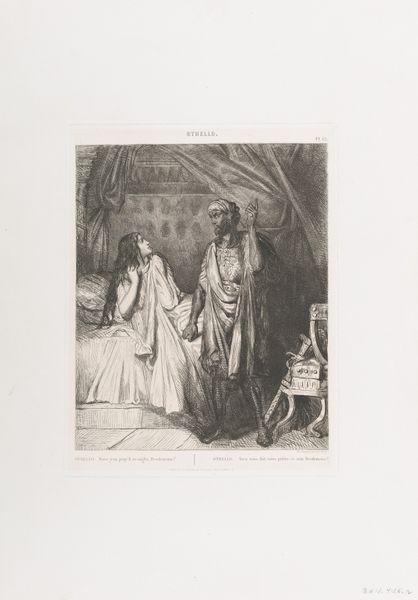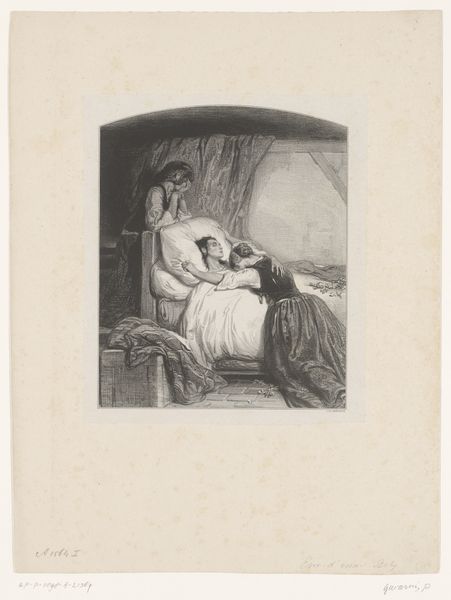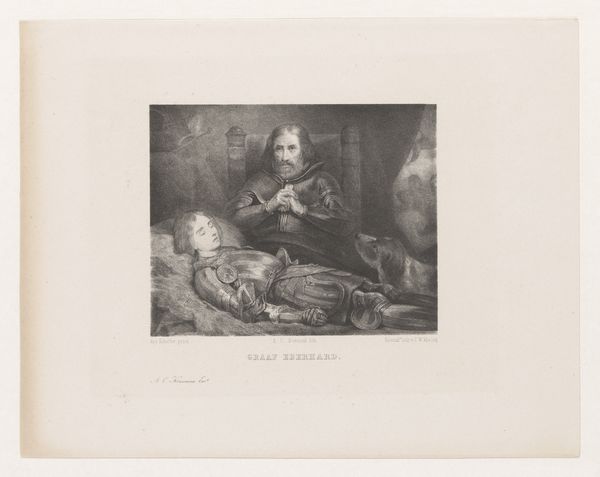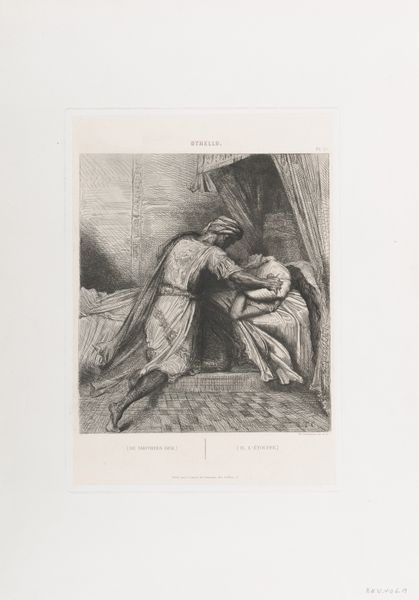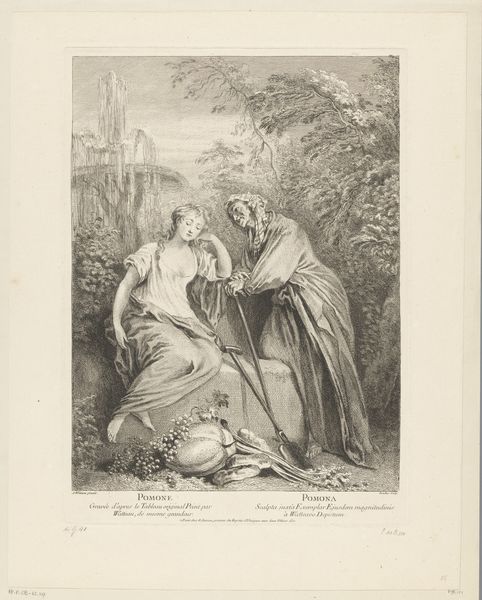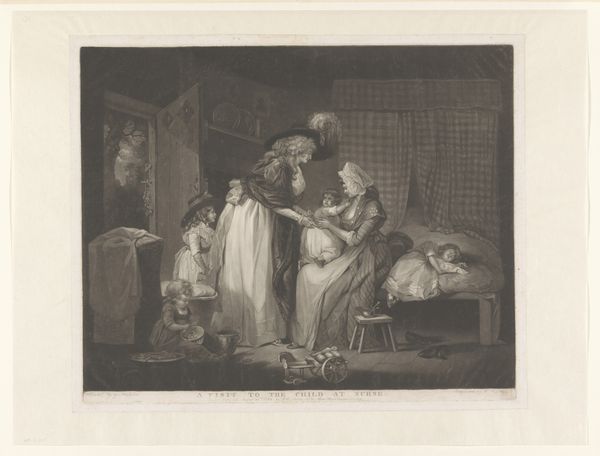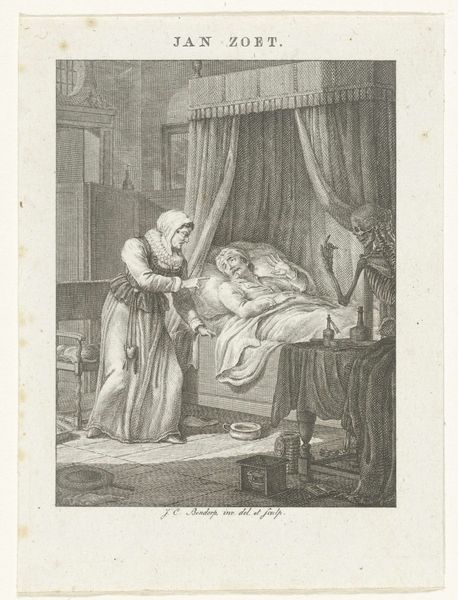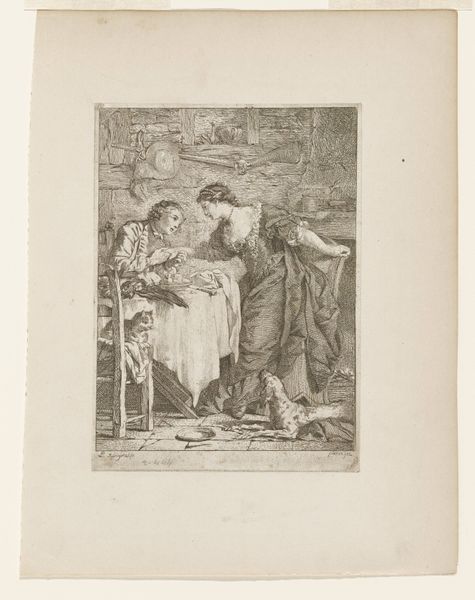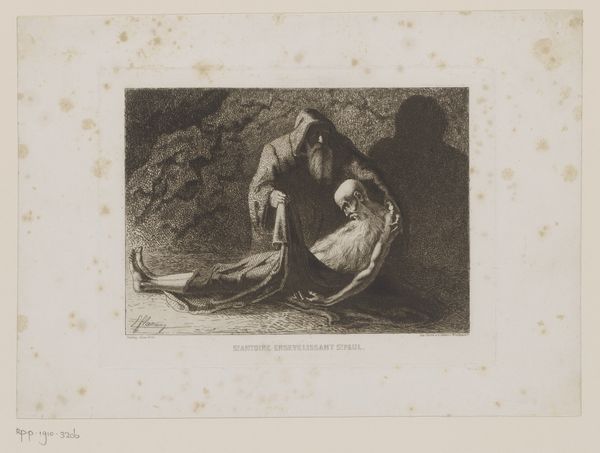
"Yet she must die": plate 11 from Othello (Act 5, Scene 2) 1844 - 1900
0:00
0:00
drawing, print, engraving
#
portrait
#
drawing
#
narrative-art
# print
#
figuration
#
history-painting
#
engraving
Dimensions: plate: 14 7/16 x 10 3/8 in. (36.7 x 26.3 cm) image: 12 3/16 x 9 1/2 in. (30.9 x 24.2 cm)
Copyright: Public Domain
Editor: This is plate 11 from Théodore Chassériau’s *Othello*, titled “’Yet she must die’: Act 5, Scene 2,” made between 1844 and 1900. It's an engraving. The scene is so fraught; Othello looming over the sleeping Desdemona. What strikes you most about this print? Curator: The printmaking process itself is revealing. Consider the labor involved in translating such intense drama into the rigid lines of an engraving. Chassériau isn't simply depicting a scene; he's actively mediating Shakespeare's tragedy through the specific material and social conditions of print production in the 19th century. Editor: How so? Curator: Look closely. The cross-hatching creates shadow, but also signifies labor – the repetitive, physical act of etching. This contrasts starkly with the 'high art' subject matter, reminding us that even the most profound emotions are rendered through material processes shaped by cultural and economic forces. Were these prints luxury items, accessible only to a certain class, or more widely distributed? The answer speaks to the social life of art at the time. Editor: So, by considering the printmaking, you’re also looking at who consumed it? Curator: Precisely! The materials and method of production dictate who had access, shaping the work's cultural impact. Did this bring Shakespeare to a broader audience or reinforce existing class boundaries? This helps us better understand Chasseriau's time, too. Editor: That’s a fascinating point. I tend to focus on the artistic interpretation, but examining the means of production reveals so much about its reception and place in society. Thanks! Curator: Absolutely. Remembering that art is always intertwined with labor, materiality, and the social world expands how we understand its power.
Comments
No comments
Be the first to comment and join the conversation on the ultimate creative platform.
